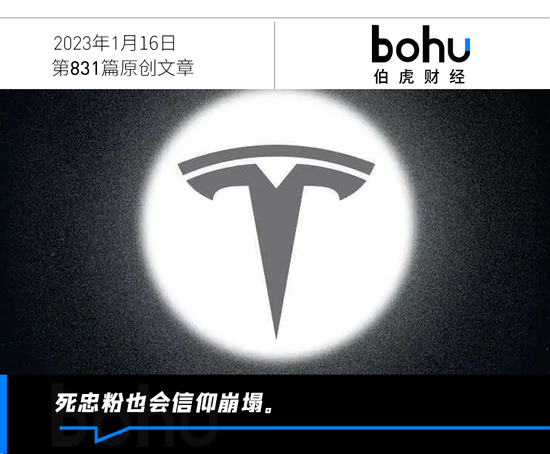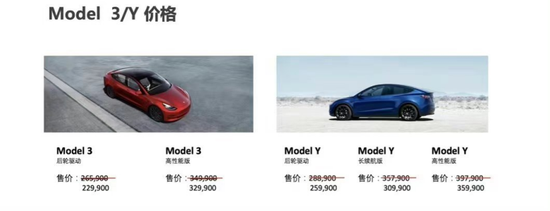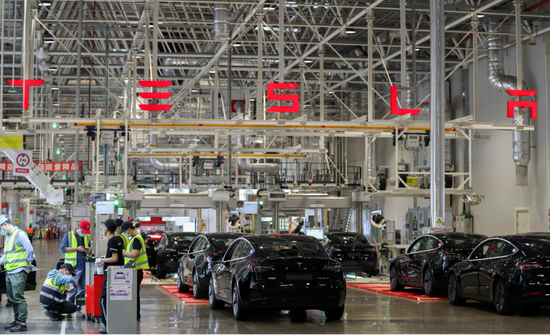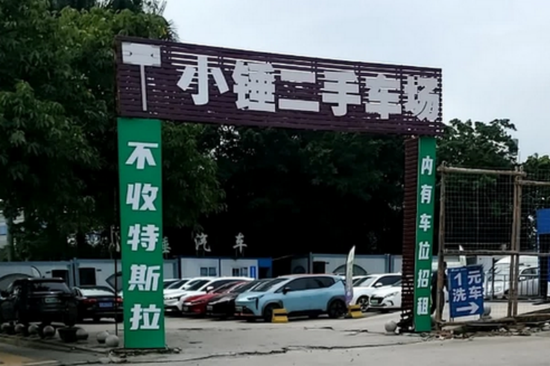
Welcome to the WeChat subscription account of “Sina Technology”: techsina
Text/Chen Ping’an
Source/Bohu Finance (ID: bohuFN)
Recently, the hottest topic in the car circle is Tesla’s price cut.
On January 6, Tesla China’s official website showed that Tesla’s domestically-produced models have dropped significantly in price. The Model 3, which was originally sold at 265,900 yuan, dropped 36,000 yuan to 229,900 yuan. The original price of the Model Y was 288,900 yuan. It also dropped to 259,900 yuan, and the Model 3 almost touched the lowest price in history.
 (Tesla Model 3/Y price)
(Tesla Model 3/Y price)Although the price cut broke the hearts of old car owners, they spontaneously went to Tesla stores to defend their rights, but the news of rights protection was quickly overwhelmed by Zhenxiang’s orders. According to relevant media reports, Tesla China’s orders soared by 30,000 in 3 days.
There are even rumors that “Tesla owners dragged their friends to help defend their rights, but the friends couldn’t resist the temptation to buy a Tesla”.
Although this is not the first price cut by the new energy auto giant. According to incomplete statistics, Tesla has adjusted its price as many as 17 times since the Shanghai Gigafactory went into production.
But a bad sign is that since entering 2022, Tesla’s price reduction magic is becoming more and more frequent. The price adjustment on January 6 was the fifth time in more than two months. On October 24, 2022, Tesla lowered the prices of Model 3 and Model Y in mainland China by a maximum of 37,000 yuan. Tesla then provided preferential policies of varying degrees on November 8, December 7, and January 1, 2023.
Behind the price adjustment is that Tesla is facing the dilemma of insufficient demand. Looking back at Tesla’s production and sales data for the entire year of 2022, except for the first quarter, production capacity has exceeded delivery.
It is for this reason that analysts are still not optimistic about Tesla even after setting a sales record in the fourth quarter. Wedbush analyst Dan Ives said: “Tesla’s demand is clearly showing cracks, and the (fourth quarter) data is not optimistic.”
Compared with other new energy vehicle players, Tesla does have enough room to rely on price cuts to boost sales. But the current problem that Tesla needs to solve, price reduction alone may not be enough.
Tesla’s price cut logic
When it comes to making money, Tesla is the only one. Someone once joked that if Musk published a book on lean production, it would be a hit.
Cost control is reflected in multiple levels of Tesla production.
First of all, Tesla’s technological innovation has saved it a lot of costs.
 (Source: Network)
(Source: Network)For example, Tesla’s CTC technology integrates the cells into groups and the chassis, and uses the structure of the cells themselves to assume the role of a part of the frame, thereby reducing the volume of the battery pack. This integrated integration reduces a large number of welding (connecting) processes, thereby improving production efficiency and reducing intermediate robots, thereby achieving the effect of reducing costs.
Another example is the 4680 battery produced by Tesla. Musk once said that the 4680 battery can save about 86% of the cost, and the cost per kWh can be reduced by 69%.
Second, Tesla’s product line provides great convenience for its scale. Tesla currently has four models on sale, of which only Model 3 and Model Y are sold. Of the 1.31 million electric vehicles to be delivered in 2022, Model 3 and Model Y accounted for 1.247 million.
Of course, I have to mention Tesla’s “vertical procurement system” supply chain.
This procurement model originated from Apple. Except for the independent research and development of the IOS system and chips, Apple has outsourced the entire production, allowing hundreds of suppliers to directly enter Apple’s procurement system. In this process, supply chain companies such as Goertek have created a legend of 10 times their wealth in 10 years, while Apple has completed the ultimate control of the supply chain.
According to official sources, in August last year, the localization rate of Tesla’s Shanghai factory supply chain exceeded 95%. At present, most of the major component manufacturers that have entered the supply chain of Tesla’s Shanghai factory are located within 500 kilometers of the Shanghai factory, and the drive takes about four hours. Therefore, it is also called Tesla’s “4-hour circle of friends.”
The “4-hour circle of friends” is also often used to describe Tesla’s precise, efficient and strict supply chain management.
The most intuitive data is gross profit. According to various financial reports, in the third quarter of last year, Tesla’s gross profit margin was as high as 27.9%. Compared with its peers, BYD’s was 15.89%, and Ideal, Weilai and Xiaopeng were 12%, 16.4% and 11.6% respectively.
Therefore, sacrificing profits in exchange for growth is Tesla’s unscrupulous means. In 2020, Tesla will promote the double growth of delivery volume and delivery cycle through price cuts.
Since 2022, Musk has publicly expressed his concerns about the macro economy more than once. In the recent Twitter space conference call, Musk said again, “I think we are in a recession, and I think there will be a pretty serious recession in 2023.” He believes the severity of the 2023 recession will be “comparable” to that of 2009, when big-ticket items like homes and cars will be “disproportionately affected.”
In fact, since November last year, the domestic new energy vehicle market, which has been advancing for almost a whole year, has also shown signs of slowing down. At the same time, as the subsidy policy has withdrawn from the stage of history, the industry is not optimistic about the future growth of new energy vehicles.
A research report from CITIC Securities believes that the demand overdraft effect after the policy stimulus is over is inevitable, and domestic demand for passenger car consumption may be under pressure in 2023.
This is probably the main reason why Tesla has frequently cast magic recently. Earlier in a public event, Musk said, “If you want to maintain the sales growth, you have to lower the price, otherwise, the sales growth rate will slow down. This is a choice.”
There is also resistance to price cuts
What needs to be admitted is that in the past, Tesla was able to sell well and be labeled as a high-end company, not only because of its own leading technology, but also because of various halos from the outside world.
In 2014, Tesla officially delivered electric vehicles to the Chinese market. At that time, Tesla was a proper luxury car class, and after adding various taxes and fees, the comprehensive price exceeded one million. It is not easy to buy a car. Among the car owners delivered by Musk himself, there are not only Internet upstarts such as Sina CEO Cao Guowei and Autohome President Li Xiang, but also literary figures such as the famous CCTV producer Zhang Han. .
With the pursuit of the rich, the absolute leadership of the product itself in terms of battery life and performance, and the blessing of Musk’s “Silicon Valley Iron Man” aura, Tesla has almost easily completed the “luxury” brand recognition and cultivated a large number of loyalty. fans.
Therefore, no matter what the starting point of the price reduction is, every price reduction of Tesla can usher in a wave of growth. Even if a considerable number of car owners go to the store to raise banners to defend their rights, they are always quickly overwhelmed by the soaring orders.
But now, times are different. On the one hand, the current penetration of electric vehicles has reached nearly 30%, and industry competition is intensifying. In the past, Tesla’s advantages in battery life, performance, and even intelligence are no longer obvious, and Tesla’s technological halo is weakening.
The main Model 3 and Model Y have been on the market for several years. Although relying on advanced electronic architecture and constantly updated software, they are still quite competitive in the market, but they cannot hold back the new iterations of Chinese players.
In terms of the energy replenishment system, domestic players are also catching up, and battery replacement and overcharging are the same;
The FSD (full self-driving) function, which Tesla regards as the biggest profit advantage, has not yet been implemented in China, and domestic users do not have a high degree of trust in self-driving.
Therefore, Tesla’s weak demand in the past six months is largely due to the weakening of product competitiveness. The blind pursuit of cost optimization and scale can certainly bring Tesla an advantage in terms of gross profit, and price cuts can indeed increase sales in the short term, but none of this can solve the problem of insufficient competitiveness caused by too slow product iteration.
On the other hand, frequent price cuts are also a kind of harm to the brand itself. In the past, there were relatively few competing products. Even if Tesla lowered the price, the high-end human design could still stand. But buying a car is not buying a mobile phone after all. You may not care too much about the drop of a few thousand yuan, but in the face of the discount rate of 10,000 yuan for a car, most consumers will consider whether they will become leeks.
 (Source: Network)
(Source: Network)According to upstream news reports, Tesla, which has frequently cut prices, has triggered some second-hand car dealers to price it. Some second-hand markets in Guangzhou even set up a large slogan “No Tesla” at the door.
When users start to worry about Tesla’s secondary asset valuation, then its high-end brand positioning is hard to say.
Write at the end:
After the price adjustment was announced, Tao Lin, vice president of Tesla China, posted a Weibo to explain that the price adjustment was based on “first principles” and insisted on cost pricing.

(Screenshot of Tao Lin Weibo)
The reason why Tesla dared to insist on doing this in the past was that it did not regard the profit of the vehicle itself as the main source of future revenue. Musk believes that the software revenue of autonomous driving is Tesla’s real advantage and value.
“Even if you sell a car at a very low profit margin, but then upgrade it to self-driving cars, its value will increase.”
It should be noted that the current vision of generating huge income from autonomous driving is still far away. Although Tesla is regarded as a technology stock in terms of valuation, it is still a car company in essence. Users buy your products and trust the Tesla brand.
If these things are lost, it will be very difficult to win them back.

This article is reproduced from: https://finance.sina.com.cn/tech/csj/2023-01-16/doc-imyakxzz0655078.shtml
This site is only for collection, and the copyright belongs to the original author.